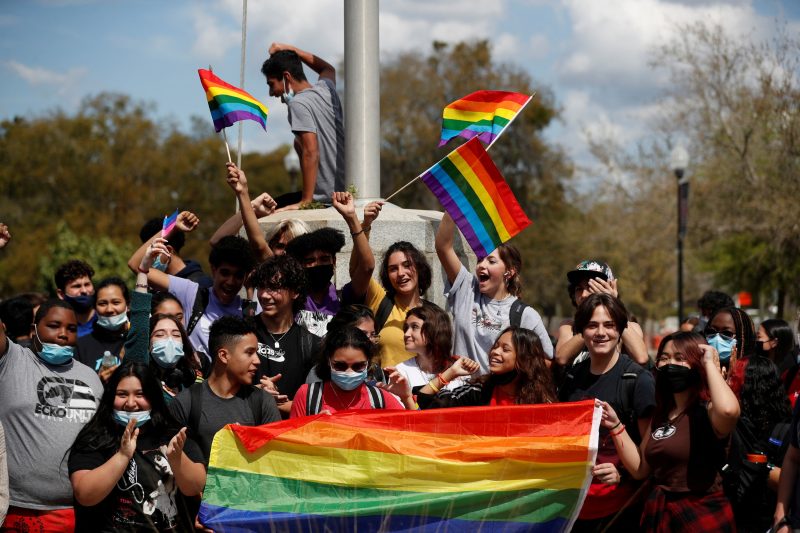For the past decade, America’s political discussion has focused to an unusual extent on ways in which racism might be built into systems of power. Stemming from the Black Lives Matter movement’s protests against police killings of Black people — killings which occur at a disproportionate rate — the conversation extended to other systems, involving varying levels of nuance and accuracy.
Many Americans find the idea of systemic racism challenging or reject it out of hand. In part, this is because they view racism through the sharply delineated lens of the pre-civil rights era — segregated drinking fountains and burning crosses — instead of as blurrier obstructions built into things such as employment, law enforcement and housing. In part, it’s because those who reject it are often those who benefit from how those systems currently operate, and so see changes to the systems as a potential diminishment of those benefits. Which isn’t to say this concern is explicit or recognized; it often isn’t. Often, it’s just a “what are they complaining about?” response that privileges the status quo.
Part of the problem, certainly, is that embedded bias is definitionally hard to see. So it’s useful (if not beneficial, as such) to consider how embedded bias plays out in another context: sexuality and gender identification.
In recent years, there’s been new pushback on the visibility of same-sex relationships and transgender individuals. Florida passed legislation last year that restricts discussions of same-sex relationships for students through the third grade. Florida Gov. Ron DeSantis (R) plans to expand that restriction to extend through high school. Proposed legislation in Texas would do the same thing. Other proposed legislation would allow school staff to ignore students’ gender identities or to mandate that parents be informed about students’ gender identity decisions.
The language of such legislation is often trimmed to be quite broad. Florida’s bill, for example, states:
You can see how open that is to interpretation. The vagueness allows advocates to assure their base that restrictions will be in place while telling the public at large that any effects will be limited.
As has been pointed out, though, there wasn’t any formalized instruction on sexual orientation in those younger grades in Florida. So what’s under discussion? DeSantis addressed this in March 2022 when discussing the above legislation.
“When you actually look at the bill and it says ‘no sexual instruction to kids pre-K through three,’ how many parents want their kids to have transgenderism or something injected into classroom instruction?” he said at a news conference. “It’s basically saying for our younger students, do you really want them being taught about sex? And this is any sexual stuff. But I think clearly right now, we see a focus on transgenderism, telling kids they may be able to pick genders and all of that.”
There are people who don’t believe that it’s possible to have a gender identity that conflicts with their assigned sex at birth. Science disagrees. If we assume, then, that there are people who feel as though their gender conflicts with their assigned sex, at what point does it become okay to acknowledge that complexity to kids? Or — since DeSantis wants to expand this to high school students — to young adults?
The dismissive and inaccurate “may be able to pick genders” rhetoric is telling: DeSantis is using perceived normalcy as a political stalking horse. Republicans are nearly four times as likely as Democrats to say that society has “gone too far” in accepting people who are transgender, according to YouGov polling from February.
But notice how he also conflates “transgender” with “being taught about sex” and “sexual stuff.” He’s extrapolating from “discussions of gender” to “sexuality” to “teaching kids about sex” — a jump that proved politically useful in defending the bill as his allies defended it by accusing opponents of wanting to “groom” kids for sex. Often, even mentions of same-sex couples were depicted as irreducibly being mentions of sexuality, while mentions of male-female couples were simply discussions of marriage.
This is systemic bias. If we assume that some people are transgender or gay or otherwise fall under the LGBTQ umbrella, why is acknowledging that existence inseparable from discussing sexuality, when acknowledging the existence of a straight man isn’t? The answer, of course, is because acknowledging the former is less familiar to people — and because intertwining them with “sexuality” incurs the political cost of which DeSantis is taking advantage.
Florida’s legislature is disproportionately Republican, and its governor someone heavily focused on appealing to the national Republican electorate. In 2020, 3 in 5 legislators in the state were Gen X or older. Among Republicans, nearly half of members of Gen X view same-sex sexual relations as always or almost always wrong; more than half of boomer Republicans say the same thing.
Those are more negative positions than most Americans in the same age ranges hold. They’re also dated; among every generational group (as The Washington Post reported last month), acceptance of same-sex relationships has increased over time.
Incidentally, this pattern undercuts the idea (offered by DeSantis and others) that increased acceptance of same-sex relationships is a function of in-class activism. If the problem is kindergarten teachers deviously teaching students that it’s okay to be gay, where have the elderly been picking up the idea?
The United States is built around opposite-sex couples and cisgender (that is, non-transgender) people because, first, they make up a much larger percentage of the population and, second, LGBTQ individuals have long been viewed as aberrant or immoral. It’s trivial to pick out overt systemic biases: same-sex marriage was legalized only in 2015; legal prohibitions on same-sex sexual relations were overturned only 20 years ago. It’s not much harder to identify subtler systemic biases, too, like suggesting that educators must be careful about how they offer instruction on “sexual orientation,” as though such instruction is inherently sexualizing.
That such rules give primacy to the views of older people — people more critical of same-sex relationships and people who vote more — is not a coincidence. It has become painfully obvious that targeting LGBTQ issues is seen as a positive for Republican legislators in particular, yielding all of the benefits of targeting a marginalized community but without the costs of that community making up a substantial chunk of the population.
It is a defense of the status quo. It is a defense of the biases that exist. And the pattern is not confined to LGBTQ issues.








